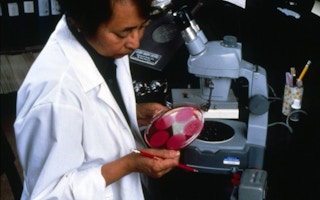Asian, African and Latin American scientists appear on fewer editorial boards, endure delays in acceptance of research papers and receive fewer citations, hindering their academic careers, a study shows.
Based on a dataset of a million papers from six publishers — Frontiers, Hindawi, Institute of Electrical and Electronics Engineers, Multidisciplinary Digital Publishing Institute, PLOS and PNAS — between 2021 and 2020, the study found fewer non-white editors than would be expected going by their share of research paper authorship.
Scientists from the three regions wait longer between the submission and acceptance of their manuscripts, according to the study.
Papers in top neuroscience journals with non-white first and last authors are cited 9 per cent less than expected while papers that cited white first and last authors are cited 5 per cent more than expected.
“In a previous study, our team had found women significantly underrepresented on editorial boards,” says Bedoor AlShebli, an author of the study and assistant professor of computational social science at New York University, Abu Dhabi, United Arab Emirates.
“Here, in a natural continuation, we investigate racial and geographical inequality,” she tells SciDev.Net.
AlShebli said the data required for the study was not readily available online.
“
It is easier to get a paper accepted if you have a western scientist as a co-author and many in the developing world choose such an option to get their paper published fast.
CP Rajendran, professor, National Institute of Advanced Studies
“Curating the data was challenging and time-consuming, but our computational background came in handy, allowing us to handle vast amounts of unstructured data,” she added.
“Through this study, we showed that non-white scientists face multiple challenges that could hinder their academic careers,” AlShebli said.
“Understanding the reasons behind this phenomenon would bring us closer to a world without racial and geographical disparities.”
One reason for delays in accepting papers, she said, could be that reviewing scientists are more reluctant to accept papers from Asia, Africa and South America, where the authors’ affiliations are unfamiliar.
“As a result, editors may end up spending more time looking for reviewers of such papers,” she suggested.
The dataset used, the researchers claim, is the largest of its kind to date, capturing information about the handling editor and time spent under review for a million papers spanning two decades and multiple publishers, and disciplines.
Three outcomes were examined: editor-to-author ratio, time spent between submission and acceptance of a paper, and the number of citations received.
The researchers accept the limitations of the study, including the fact that it only considered data from six publishers. It also used an algorithmic tool that classifies a scientist’s race based on his or her name, which is less than perfect.
According to the study, the racial gap in citations means that scientists from Asia, Africa and Latin America have lower visibility compared to scientists doing similar research in North America or Europe.
“This is especially alarming since those with low visibility are less likely to receive grants and awards, which, in turn, may lead to even greater disparities in visibility,” it says.
“It is true that the publication process, at least partly, suffers from ‘in-group’ bias, generated by affiliations,” says CP Rajendran, an internationally known geologist and currently an adjunct professor at the National Institute of Advanced Studies in Bangalore, India.
“This generates real or perceived advantage through connections that can negatively impact the academic research culture.”
Rajendran, who was not a participant in the study, adds: “it is easier to get a paper accepted if you have a western scientist as a co-author and many in the developing world choose such an option to get their paper published fast.
“It is also a fact that the rejection rate of papers is generally high if the authors are only from Asia, Africa and South America.”
One of the ways to address this problem, Rajendran believes, is to have editors, including women, “representatively” from all these regions.
She says that it is worth noting that the increasing levels of fees for open-access publishing act as an additional hindrance that discourages scientists and authors from the low- and middle-income countries from attempting to publish their research work.
Addressing disparities may require publishers to carry out internal audits of the publication process, from the selection of editorial board members to the time spent reviewing submissions, to the promotion of published manuscripts, the study says.
In the end, it is for the scientific community as a whole to create an ecosystem that does not have geographical or racial disparities, says AlShebi.
This article was originally published on SciDev.Net. Read the original article.










